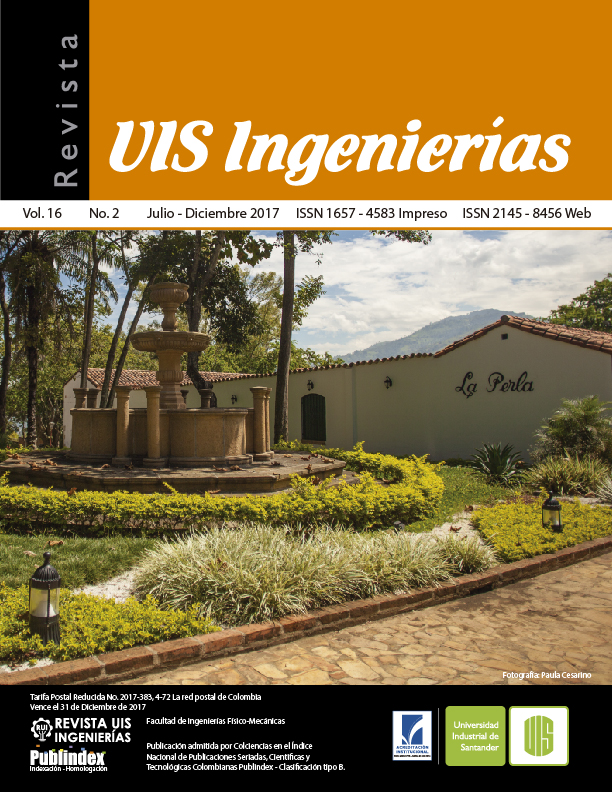Development of a set of mobile robots for basic programming experimentation
Published 2017-06-01
Keywords
- Mobile robots,
- Engineering education,
- Basic programming
How to Cite
Abstract
Mobile robots platforms are being used in different Educational contexts such as primary, middle and high school levels of education. A review of the state of the art shows that 197 papers have been published in this field of knowledge over the last 10 years [1]. Nowadays, Latin America faces a serious problem regarding student enrollment in engineering programs with a ratio of one graduated Engineer per every 4500 to 10000 people [2] depending on country. In Colombia, the SPADIES program [3] states that an important aspect of the dropout was due to the lack of motivation and interaction of students with real artifacts that linked the theory and the practice. In this work, a set of programmable mobile robots were developed considering different levels of knowledge, as a tool for basic programming experimentation. The set of mobile robots embodies sensors for proximity, line, light, inertial, and vision. Moreover, this set also incorporates tools such as Bluetooth, LEDs-ring and, a mechanical support for an erasable marker. This set of mobile robots consolidates a hands-on tool to introduce students to Science, Technology, Engineering and Math. The results reported in this paper show the mobile robots functionality when they are programmed using different levels of complexity.
Downloads
References
M. E. Argentina, “Plan Estrategico de Ingenierìa 2012-2016,” Ministerio de Educación - Argentina, 2014. [Online]. Available: http://pefi.siu.edu.ar/. [Accessed: 13-Feb-2014].
M. de Educación, “SPADIES - ..::Ministerio de Educación Nacional de Colombia::..,” 2014. [Online]. Available: http://www.mineducacion.gov.co/1621/w3-article-156292.html. [Accessed: 13-Feb-2014].
P. De Cristóforis, A. Member, S. Pedre, S. Member, M. Nitsche, T. Fischer, F. Pessacg, and C. Di Pietro, “A Behavior-Based Approach for Educational Robotics Activities,” vol. 56, no. 1, pp. 61–66, 2013.
L. Major, T. Kyriacou, and O. P. Brereton, “Systematic literature review: teaching novices programming using robots,” 15th Annu. Conf. Eval. Assess. Softw. Eng. (EASE 2011), pp. 21–30, 2011.
E. Milena, J. Jojoa, E. C. Bravo, E. Bladimir, and B. Cortés, “Tool for Experimenting With Concepts of Mobile Robotics as Applied to Children ’ s Education,” vol. 53, no. 1, pp. 88–95, 2010.
C. K-Team, “K-Team Corporation, Mobile Robotics,” 2016. [Online]. Available: http://www.k-team.com/. [Accessed: 01-Jan-2016].
A. MobileRobots, “Pioneer Robots,” 2013. [Online]. Available: http://www.mobilerobots.com/ResearchRobots/. [Accessed: 01-Jan-2014].
Ir. Corporation, “iCreate Robot,” 2013. [Online]. Available: http://www.irobot.com/us/learn/Educators/Create.aspx. [Accessed: 01-Jan-2014].
A. Corporation, “Pob-Bot Robot,” 2013. [Online]. Available: http://education.awabot.com/. [Accessed: 01-Jan-2014].
Arduino, “Arduino Robot,” Arduino, 2013. [Online]. Available: http://arduino.cc/en/Main/Robot. [Accessed: 01-Jan-2014].
Aseba, “Thymio II Robot,” Aseba, 2013. [Online]. Available: https://aseba.wikidot.com/en:thymio. [Accessed: 01-Jan-2014].
Festo, “Robotino,” 2013. [Online]. Available: http://www.festo.com/cms/en_corp/11367.htm. [Accessed: 01-Jan-2014].
BirdBrain-Technologies, “The Finch Robot,” 2016. [Online]. Available: http://www.finchrobot.com/.[Accessed: 01-Jan-2016].
Pololu-Corporation, “Pololu M3pi Robot,” 2016.
MakeBlock, “mBot Educational STEM Robot,” 2016. [Online]. Available: http://www.makeblock.cc/mbot/. [Accessed: 01-Jan-2016].
Meet-Edison, “Meet Edison - Cheap Programable Lego,” 2016. [Online]. Available: http://meetedison.com/. [Accessed: 01-Jan-2016].
Parallax, “Scribbler Robot,” 2014. [Online]. Available: http://www.parallax.com/product/28136. [Accessed: 01-Jan-2014].
Open-Source-Robotics-Foundation, “TurtleBot,” 2016. [Online]. Available: http://www.turtlebot.com/. [Accessed: 01-Jan-2016].
M. Boanani, T. Baabura, P. Retornaz, F. Vaussard, S. Magnenat, D. Burnier, V. Longchamp, and F. Mondada, “Miniature Mobile Robots Group - Mobots,” 2016. [Online]. Available: http://mobots.epfl.ch/marxbot.html. [Accessed: 01-Jan-2016].
F. Gómez, F. Muñoz, B. E. Florián, C. A. Giraldo, and E. B. Bacca-cortes, “Diseño y prueba de un robot móvil con tres niveles de complejidad para la experimentación en robótica Design and testing of a mobile robot with three levels of complexity for robotics experimentation,” Ing. y Compet., vol. 74, no. 2, pp. 53–74, 2008.
C. Giraldo, B. Florian, B. Bacca, F. Gómez, and F. Muñoz, “A programming environment having three levels of complexity for mobile robotics,” Ing. e Investig., vol. 32, no. 3, pp. 76–82, 2012.
D. Salas, I. Guarín, and R. Llamosa, “ISO SPICE EN SISTEMAS HIPERMEDIA EDUCATIVA,” Rev. UIS Ing., vol. 2, no. 1, pp. 63–72, 2003.
H. Gonzáles and C. Mejía, “ESTUDIO COMPARATIVO DE TRES TÉCNICAS DE NAVEGACIÓN PARA ROBOTS MÓVILES,” Rev. UIS Ing., vol. 6, no. 1, pp. 77–84, 2007.
M. Suell, J. Archila, and O. Lengerke, “DISEÑO MECATRÓNICO DE UN ROBOT TIPO AGV ‘AUTOMATED GUIDED VEHICLE," Rev. UIS Ing., vol. 7, no. 1, pp. 65–76, 2008.
LEGO-Company, “Robolab on-line WEB site,” 2016. [Online]. Available: http://www.robolabonline.com/home. [Accessed: 01-Jan-2016].
Awabot, “Awabot Education,” 2016. [Online]. Available: http://www.pob-tech.com/. [Accessed: 01-Jan-2016].
MIT-Media-Lab, “Scratch - Imagine, Programming, Share,” 2016.
Code.org, “CODE - Anybody can learn,” 2016. [Online]. Available: https://code.org/. [Accessed: 01-Jan-2016].
MIT, MIT-Media-Lab, and MIT-CSAIL, “MIT App Inventor,” 2016. [Online]. Available: http://appinventor.mit.edu/explore/about-us.html. [Accessed: 01-Jan-2016].
R. Barry, “FreeRTOS - Market leading RTOS,” 2016. [Online]. Available: http://www.freertos.org/. [Accessed: 01-Jan-2016].
K. Ogata, Sistemas de control en tiempo discreto. Prentice Hall, 2009.
R. C. Arkin, Behavior-Based Robotics (Intelligent Robotics and Autonomous Agents), Third. A Bradford Book, 1998.
E. C. for the D. of V. T. (CEDEFOP), “Skills for Green Jobs (European Synthesis Report),” 2010.
USA-White-House, “Computer Science for All - Whitehouse,” 2016. [Online]. Available: https://www.whitehouse.gov/blog/2016/01/30/computer-science-all. [Accessed: 01-Jan-2016].

